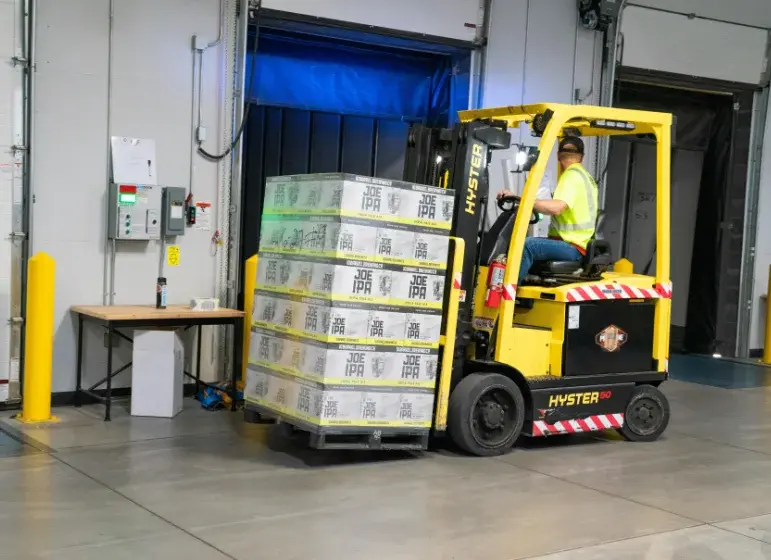
If your business relies on loading and unloading heavy goods from containers, your container ramp is one of the hardest-working pieces of equipment on site. Whether you’re moving pallets, drums, or machinery, that shipping container ramp takes the full weight of forklifts and loads day in and day out. Just like any other vital asset, regular maintenance is the key to keeping it safe, efficient, and compliant — and to avoiding costly repairs or downtime.
In this article, we’ll cover practical ways to look after your shipping container ramp, identify early signs of wear, and extend its life for years to come.
Why Container Ramp Maintenance Matters
It’s easy to take your ramp for granted — after all, it’s built from solid steel and designed for heavy-duty use. But exposure to weather, friction, weight, and movement can cause gradual wear that affects both safety and performance.
A poorly maintained forklift container ramp can lead to:
- Reduced load capacity due to structural fatigue.
- Slipping hazards from worn surfaces or oil buildup.
- Misalignment that causes forklifts to bounce or tip.
- Rust and corrosion that weaken welds and joints.
By following a consistent inspection and care routine, you’ll not only extend the forklift ramps for containers’ working life but also protect your team, your equipment, and your productivity.
1. Clean and Inspect Regularly
At least once a week — or more often in dusty or wet environments — give your forklift ramps for containers a thorough clean. Remove dirt, debris, and any build-up of grease or mud, especially around the hinges, base plates, and connection points.
After cleaning, inspect the ramp for:
- Cracks or weld separation – even small ones can grow quickly under load.
- Surface wear – check the anti-slip tread for signs of smooth or polished patches.
- Rust spots – particularly on corners, undercarriage, and welded seams.
- Alignment issues – ensure the ramp sits flat and stable when in position.
A clean shipping container ramp makes it much easier to spot problems early and prevent them from turning into serious faults.
2. Keep Moving Parts Lubricated
If your forklift container ramp features hinges, pins, or adjustable height mechanisms, these moving parts need to stay lubricated. Use a high-quality industrial grease or spray lubricant designed for outdoor use. Apply it regularly — especially before and after heavy rain or extended use.
Lubrication prevents metal-on-metal friction, which not only reduces wear but also makes setup and operation smoother and safer.
3. Protect Against Corrosion
Moisture is one of the biggest threats to steel forklift container ramps. To protect your shipping container ramp, apply a rust-inhibiting primer or coating every 12 to 18 months. If your site is near the coast or regularly exposed to rain, consider increasing that frequency.
Touch up scratches or chipped paint as soon as they appear — bare metal can start to rust within days when exposed to the elements.
4. Check Weight Ratings and Load Practices
Every container ramp is designed with a specific load capacity. Regularly confirm that the weight of your forklifts, pallets, and materials does not exceed that rating. Overloading is one of the fastest ways to shorten the lifespan of a forklift container ramp.
Train operators to drive slowly when ascending or descending the ramp and to avoid sudden braking or turning. Even when within load limits, aggressive forklift handling can cause long-term structural stress.
5. Store Ramps Properly When Not in Use
When your shipping container ramp isn’t in use, store it on level ground in a dry, shaded area. Keeping it off wet concrete or soil helps prevent moisture absorption from underneath.
If the forklift container ramp is used outdoors and can’t be moved inside, invest in a heavy-duty weather cover. Protecting it from rain and UV rays significantly slows down corrosion and paint degradation.
6. Schedule Annual Professional Inspections
While daily checks are important, having your forklift ramps for containers inspected by a qualified technician each year adds an extra layer of assurance. A professional can assess weld integrity, load-bearing components, and any hidden structural issues.
They can also recalibrate adjustable features and provide certification if required for compliance or insurance purposes.
7. Replace Worn Components Promptly
If bolts, hinges, or connecting pins start showing signs of wear, replace them immediately. Delaying small fixes can lead to costly replacements later — or worse, safety incidents.
Keep a record of all maintenance and replacements. A simple spreadsheet or logbook helps track the ramp’s service history and gives operators a clear picture of its condition.
8. Train Staff in Safe Handling
Maintenance isn’t just about mechanics — it’s also about people. Make sure everyone using the forklift container ramp understands the proper procedures for setup, loading, and removal.
Common mistakes like incorrect ramp positioning, failing to secure the lip plate, or exceeding angle limits can damage the ramp and increase accident risk. A quick refresher training every few months goes a long way in maintaining both safety and equipment quality.
Extending Value Through Preventive Care
When treated well, a quality shipping container ramp can last for many years. The cost of a little regular maintenance is minimal compared to the expense and disruption of unplanned downtime or replacement.
By combining routine cleaning, inspections, protective coatings, and proper operator training, your ramp will continue to perform at its best — keeping your operations smooth, safe, and efficient.
A container ramp might seem like a simple piece of steel, but it plays a critical role in the flow of your warehouse or logistics yard. Looking after it properly not only extends its lifespan but also ensures every load transfer happens safely and efficiently.
At All Handling Solutions, we understand that equipment reliability is central to your success. If you’re looking for durable, Australian-made forklift ramps for containers or advice on the best ramp maintenance products, get in touch with our team today.